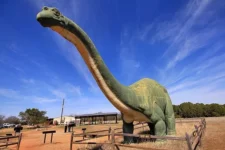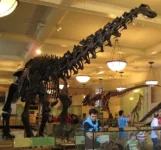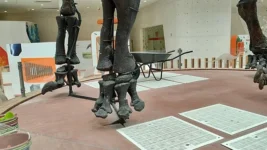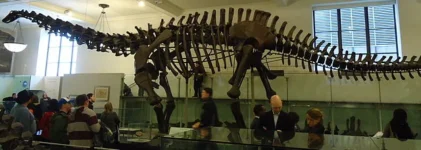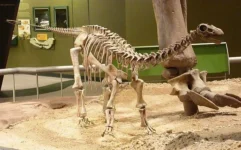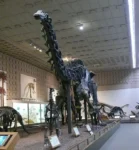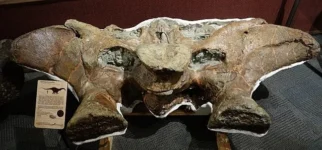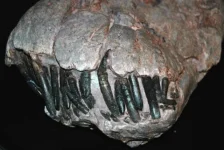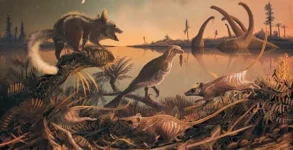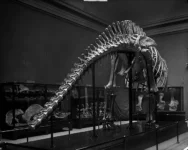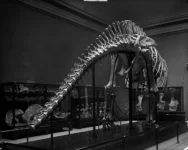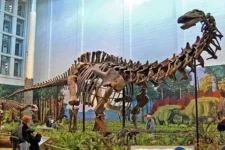Apatosaurus
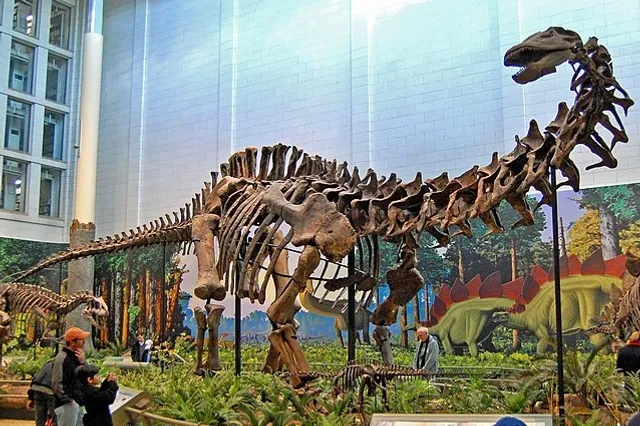


APATOSAURUS
Apatosaurus, formerly known as Brontosaurus, is a well-known genus of sauropod dinosaur that lived during the late Jurassic period, approximately 154 to 150 million years ago. Apatosaurus is significant because it represents one of the largest and most iconic dinosaurs known to science. Its discovery and study have contributed greatly to our understanding of sauropod dinosaurs, their evolution, and their role in ancient ecosystems. Here are some key details about Apatosaurus:
SIZE AND ANATOMY:
- Size: Apatosaurus was one of the largest land animals to have ever existed. Adults reached lengths of about 70 to 75 feet (21 to 23 meters) and stood around 15 to 20 feet (4.5 to 6 meters) tall at the hips.
- Weight: It weighed around 20 to 35 tons, though some larger individuals may have weighed more.
- Body Structure: Apatosaurus had a long neck and tail, a relatively small head with nostrils on top, and a large, barrel-shaped body supported by four stout legs. Its forelimbs were slightly shorter than its hind limbs.
- Diet: Apatosaurus was an herbivore, feeding on plants such as ferns, conifers, cycads, and other vegetation. Its teeth were adapted for stripping foliage from plants rather than grinding.
- Tail: The tail of Apatosaurus was long and whip-like, likely used for balance and possibly defense against predators.
BEHAVIOR AND ECOLOGY
- Grazing Behavior: Apatosaurus likely spent much of its time browsing for food in forests and floodplain environments. Its long neck allowed it to reach vegetation high above the ground.
- Social Behavior: Fossil evidence suggests that Apatosaurus may have lived in herds or family groups, which could have provided protection from predators and facilitated mating and raising young.
- Habitat: It inhabited what is now western North America, particularly in regions that were semi-arid with seasonal rivers and lush vegetation during the Jurassic period.
FOSSILS AND DISCOVERY:
- First Discovery: The first Apatosaurus fossils were discovered in the late 19th century in Colorado, USA, by paleontologist Othniel Charles Marsh. Initially named Brontosaurus, it was later determined to be a species of Apatosaurus.
- Significant Finds: Numerous fossils of Apatosaurus have been found, including nearly complete skeletons and trackways. These discoveries have provided valuable information about its anatomy, behavior, and evolutionary relationships.
CLASSIFICATION
- Order: Saurischia
- Suborder: Sauropodomorpha
- Family: Diplodocidae
- Genus: Apatosaurus
- Species: Several species have been described, including Apatosaurus ajax and Apatosaurus louisae.
FUN FACTS:
- Name Controversy: Apatosaurus was originally named Brontosaurus in 1879 by O.C. Marsh. However, in 1903, it was determined that Brontosaurus and Apatosaurus were actually the same genus. In recent years, some studies have suggested that Brontosaurus may be a valid genus again, but this remains a topic of scientific debate.
- Swallowing Stones: Like other sauropods, Apatosaurus likely swallowed stones (gastroliths) to help grind up tough plant material in its stomach, aiding digestion.
- Size Variation: There was significant size variation among individuals of Apatosaurus, with some reaching larger sizes than others. This variation may have been influenced by factors such as age, sex, and environmental conditions.
- Trackways and Behavior: Fossil trackways of Apatosaurus have provided insights into its behavior, such as walking speed and gait, and interactions with other dinosaurs in its environment.
